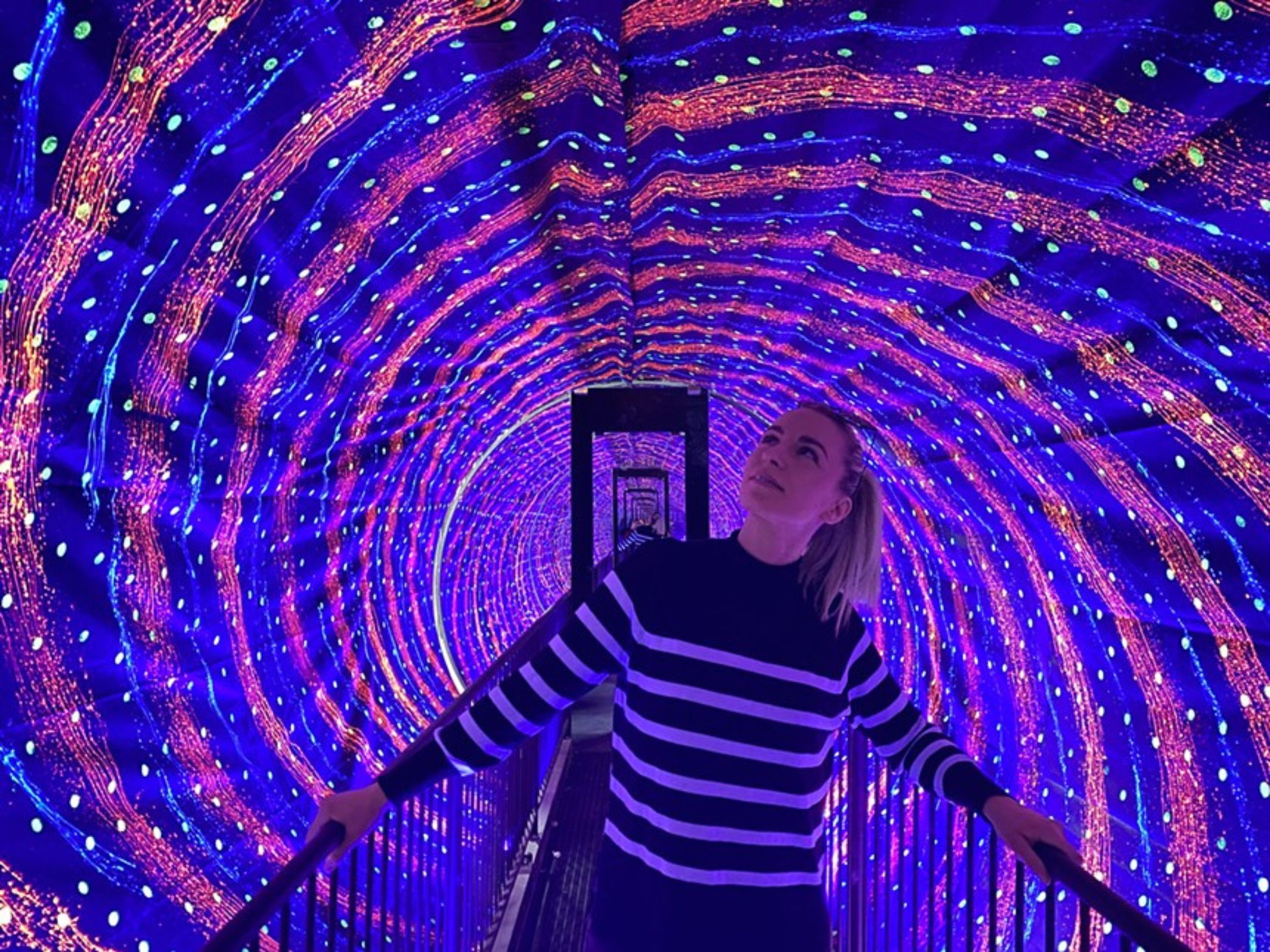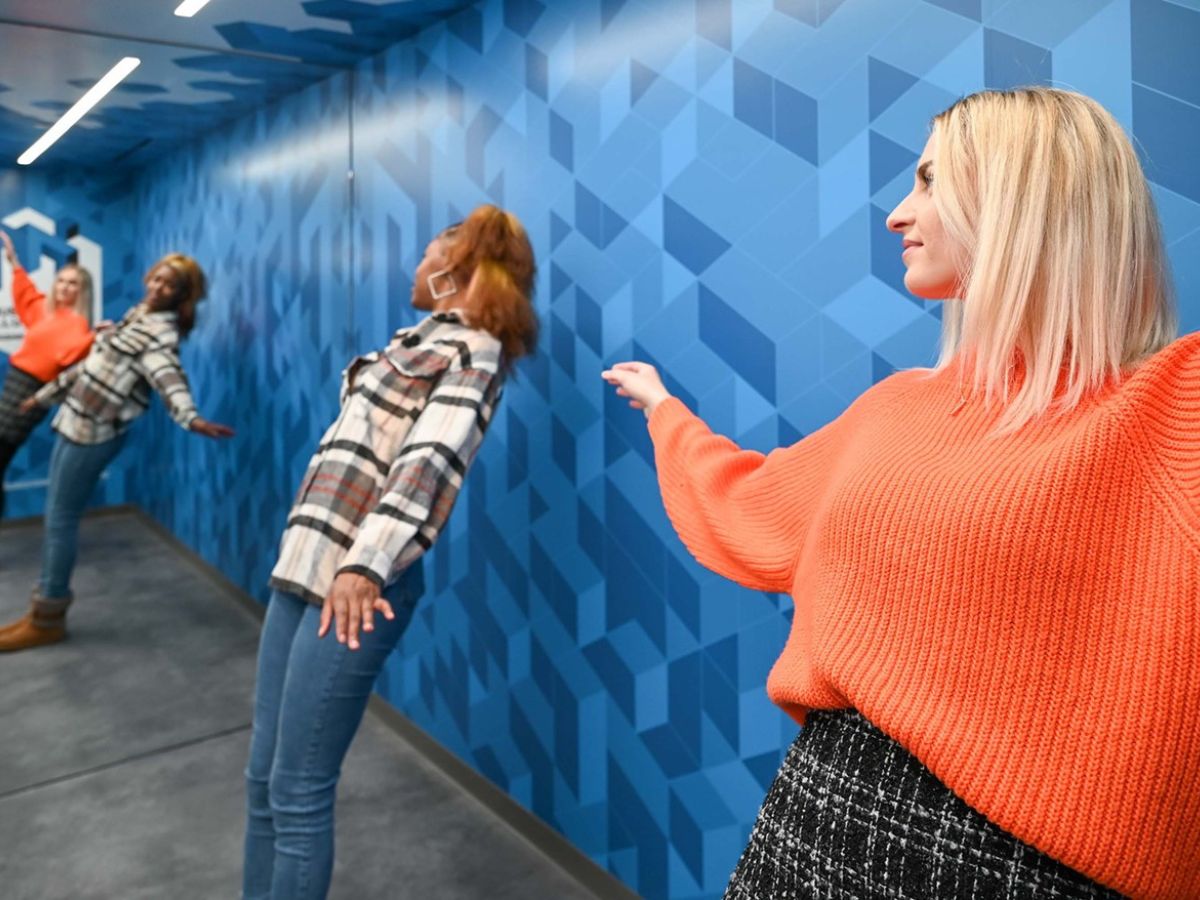The Museum of Illusions at Arizona Boardwalk, which opens Saturday, is designed to make visitors question what they see and what’s real versus perception.
“The museum teaches you something about the human brain and how we see the world around us,” says Stacy Stec, director of sales and marketing for LOL Entertainment, the franchise holder for the Museum of Illusions in Scottsdale, Chicago, and Philadelphia.
The classic picture that looks like a vase or a silhouette of two faces, depending on how you view it, is an example of an illusion, but the 60-plus exhibits at the Museum of Illusion take the idea much further. Some are stereograms or holograms, others use mirrors to deceive, and a few involve lights and colors, including images that change depending on the color projected onto them.
“People call illusions a trick of the eye, but it’s actually a trick of the mind,” Stec says. “It’s your brain being tricked.”
The Museum of Illusions originated in 2015 in Zagreb, Croatia, and by this weekend, will have 42 locations in 26 countries (a museum in Austin, Texas, opens this week as well). The attractions have welcomed 9 million visitors since the original one opened.
“It quickly spread to major cities in Asia and Europe,” Stec says, “and more recently came over here to the U.S., with the first location opening in New York City in 2018.”
The Scottsdale museum is larger than many of the others, however, and will have some things that aren’t in other museums. Bruno Fintić, head of production and assembly for the Museum of Illusions, says, “The majority of the exhibits are standard, but we try to localize.”
One room, for instance, called the Building Illusion, differs from city to city. Here, it’s an adobe house where people will think they’re crawling up walls and hanging upside-down in doorways.
In the Ames Room, which looks like a cube, people appear to grow and shrink as they walk from one side to the other. It's named after American scientist Adelbert Ames Jr., who made contributions to ophthalmology, psychology, philosophy, physics, and physiology.
The Vortex Tunnel, with its spinning lights, makes the person inside feel like they’re tipping over. And the Infinity Well gives the sense of a never-ending hole in the floor, which will unsettle anyone afraid of heights.
“The museum is really rooted in the cognitive sciences,” Stec says. “They’re experiencing science, but in a really fun way.”
Placards on the walls will explain how the visuals work on the brain, and illusion specialists will be on hand to provide information and answer questions. Also, it's recommended to go with friends or family to share reactions and perceptions — in other words, playing those mind games together is better.
Although many of the exhibits make for cool selfies, the museum also will include “logic puzzles and games that give your brain a workout,” Stec notes. As a bonus, a magician will be on hand from noon to 2 p.m. on Saturday, March 11, to stroll around and interact with guests.
When asked how people in other cities and countries have responded to the Museum of Illusions, Stec says, “The words ‘blew my mind’ come up a lot.”
She adds, “People leave feeling totally bewildered, totally questioning everything around them. When you’re in the space, it really makes you question your sense of reality.”
The Museum of Illusions, 9 a.m. to 8 p.m. daily, requires a timed admission, with last entrance 40 minutes before closing. Arizona Boardwalk, 9500 East Via de Ventura, Suite E-120, Scottsdale. Cost is $24 for adults and $17.95 for ages 3 to 12. Call 480-270-6640 or visit moiscottsdale.com.

